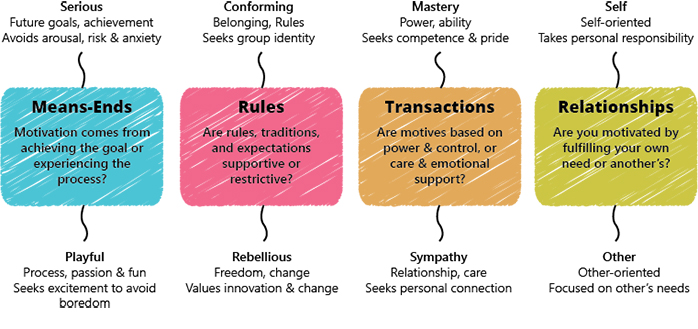Home / Courses / Designing for Children - Play and Learn / Play Theories and Design / Apter’s Reversal Theory
Design Course
Designing for Children - Play and Learn
Play and Learn
by
Apter’s reversal theory proposes using design to induce changes (reversal) in motivational states and/or emotional arousal, to guide the user in a desired experience. According to Apter, any action is a result of an interplay between four pairs (dimensions) of alternative motivational states (refer figure below). Each of these dimensions can be ‘reversed’ leading to change in hedonic tone (emotions) which further affects the action.

In the context of designing for play, the aim of the designer should be to reverse serious state to playful, process oriented state in the ‘means-ends’ dimension. However, the other motivation dimensions can be used as a framework to generate design ideas for play activity, by selecting their different combinations. e.g. allowing players to bend or set rules (i.e. rebellious) in 2nd dimension, designing for sympathy in 3rd dimension and focusing on social aspect of fulfilling other’s needs in 4th dimension would result in the popular multiplayer Role-playing board games like Dungeons and Dragons, which are more suited to older children and adults. Similarly selecting rebellious, mastery and self in the respective dimensions could lead to Lego brick games, suited for middle school children. Exploring other combinations may lead to design possibilities which have not been explored much.
Having talked about the different motivational dimensions and their possible effect on activity, Apter further expands the idea of telic v/s paratelic states, by relating it to the level of arousal in an activity.
A high arousal situation would lead to anxiety in telic mode, but high arousal would be perceived as exciting in the paratelic mode. Similarly, low arousal situation in paratelic mode is boring but it may be preferred in telic mode leading to relaxation. The designer can explore two kinds of possibilities while designing for play:
a) Reversing a telic activity into paratelic activity.
b) Increasing/decreasing arousal levels within paratelic state to create pleasant experiences.


